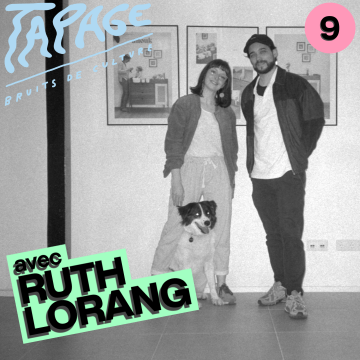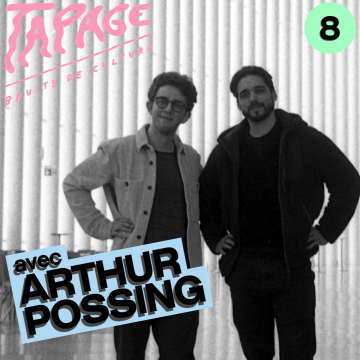19 sep. 2023Claudine Arendt
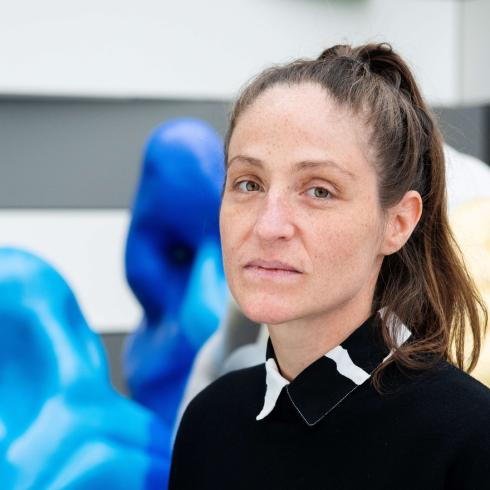
Photo: Claudine Arendt, © LaLa La Photo
Interview with Claudine Arendt,
Grant recipient of the Schleich-Lentz Foundation
How did you get into ceramics and since when do you practice it?
In my works, I use a wide variety of materials. For example, I have created a large 4.5 m Covid themed fountain at the Oeuvre Nationale de Secours Grande-Duchesse Charlotte in Leudelange. It was after being awarded the Mondrian Fonds Emerging Artist stipend, which included a mentorship program with Eylem Aladogan, who brought me towards ceramics. I was getting interested in the historic meaning and the material qualities of ceramics. This leads me to complete a residency at the European Ceramics Workcenter in Oisterwijk, the Netherlands, with the support of the bourse residence à domicile from the Luxembourg ministry of culture.
For what reason did you choose this medium of expression over others?
Material plays an essential role in my works, the aesthetics and the tactile experience play their defined role. I often take the material qualities and make sculptures as a reaction to those. Ceramics share a long history with humanity and transport a certain familiarity, seriousness, strength and fragility at the same time. Being such a versatile material, ceramics are omnipresent in our life, from the bathroom through the kitchen, over to large scale sculptures, that will outlive us all. At the same time, the material in an unfired state remains very fragile and invites us to reflect about processes of transformation or destruction. This generates a large pool of possibilities, which makes ceramics an interesting material in my art practice.
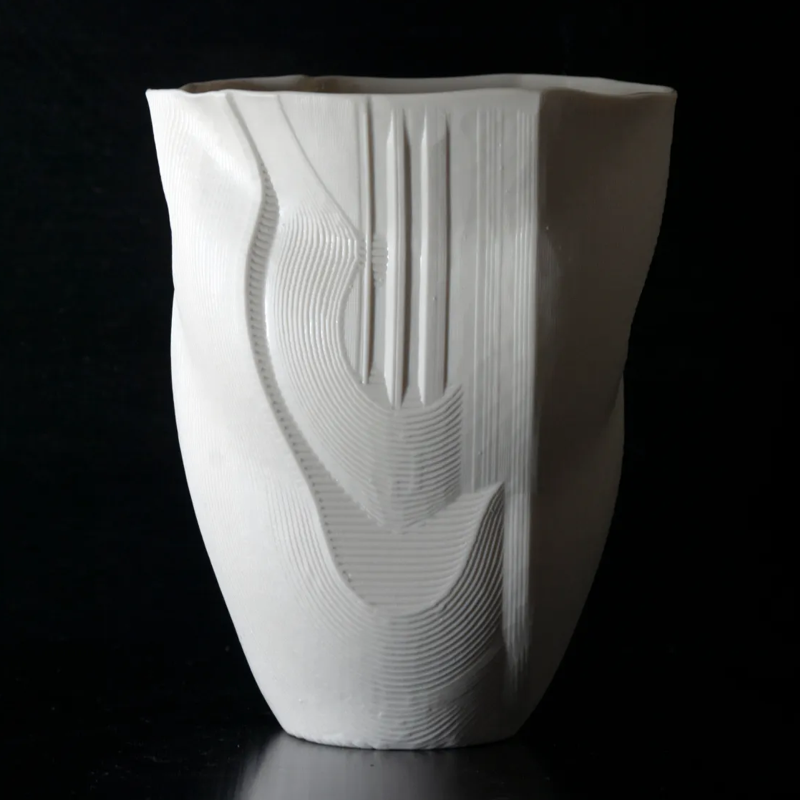
What do you enjoy the most about Ceramic art?
The process of creating ceramic artworks is highly technical. Every step taken will have a direct effect on the final object. I have become fascinated by the translation of digital data into ceramic objects. I have, for example, translated scientific algorithms into ceramic dinnerware. The algorithms are rendered tangible in the final objects, but all the processing steps in between can be read back as well. Decisions made during the translation of the scientific data into the milling path of the CNC mill, to create the moulds, the physical limitations of the 3 axes of the CNC mill I use, the choice of porcelain, glaze and the firing temperatures can all be decoded from the final object.
Can you tell us about the different focal points or orientations of your work as a ceramicist?
On one hand I am very interested in the technicality and the translation of, for example, scientific data, or rendering tangible the invisible or often overlooked. On the other hand, I am also interested in the material qualities of ceramics and the role they play, have played or could play in our daily life. Generally ceramic works are created to last, if they aren’t dropped, they can basically live forever. Unfired though, the raw material will undergo processes of transformation when exposed to the elements. This is an aspect I am currently exploring further.
Who are the ceramicists whose works have influenced you, or what are the models that inspired your work?
I am mostly inspired by the people who surround me and who work and think in comparable ways. I think it is most important to look around what is happening in the world and the art world today and to take this as main inspiration points.
Do you try, through pottery, to build bridges to the other arts, and, if yes, how?
Especially through a collaboration with the Scripps Institution of Oceanography in San Diego, a leading research institute when it comes to oceanographic research, I have created a bridge to the scientific world. Through my porcelain works, I have rendered tangible the acoustic algorithms that scientists use to detect and identify zooplankton using acoustic technologies. Zooplankton are small, fragile organisms at the bottom of the food chain. This visualization has created an ongoing discourse with the scientific community and keeps on generating interests by art and scientific organizations alike.
According to you, what is the state of ceramic art these days, is it a niche craft or is it experiencing a revival of interest?
Ceramics are omnipresent in our life, albeit often reduced to objects mass-produced in a factory far away. Besides the mass production I think that within the art world, ceramics has never really vanished but through technological advances we see novel and innovative applications, which can attract a wider group of artists. In addition to the ceramic commodities we all know, there is also a potential for a rethinking of clay as building material towards more sustainable construction materials. I think that ceramics is a world full of potential and opportunities, and this is what makes it attractive for many artists.
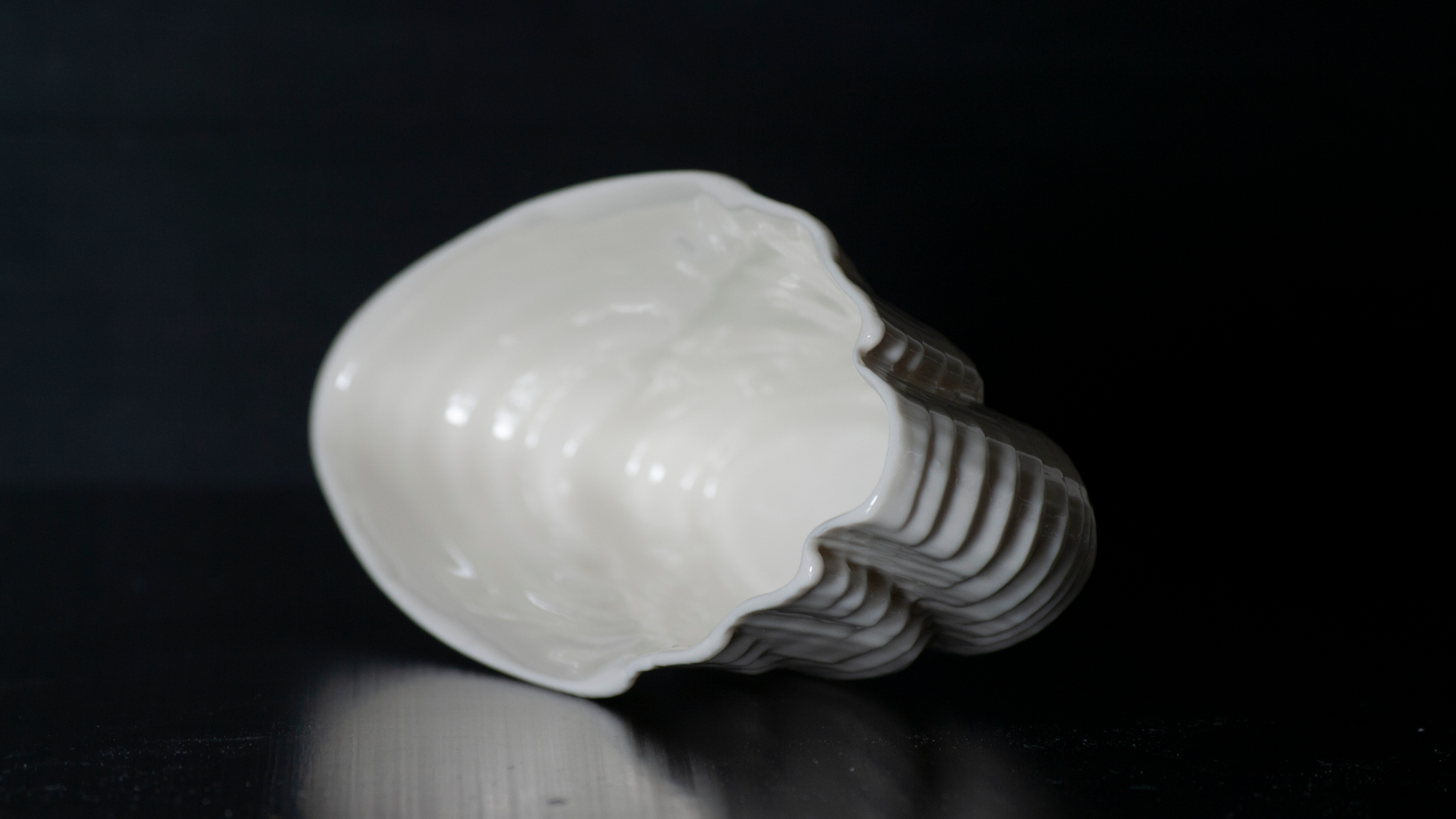
You just received the grant of the Schleich-Lentz Foundation. Can you tell us about your project and specify what the grant enables you to do in the future?
The vast majority of the world’s ocean and its inhabitants are inaccessible to us. Over the last few years, I have investigated ways of rendering this seemingly imperceptible world accessible. Humans heavily rely on visual, tactile and audible information in our every day life. Ceramics can convey the fragility and precious nature of these organisms. Ceramics play an important role in our everyday life, from food consumption to sanitary furniture, ceramics are omnipresent. This familiarity renders ceramic objects more accessible, and at the same time we are aware of their delicate nature.
The first, completed part of the project, emerged from an artist residency at the European Ceramics Work Center (EKWC, The Netherlands). I have collaborated with the Scripps Institution of Oceanography (San Diego, USA) and an underwater acoustician from the Thünen Insitute (Germany) to render tangible the acoustic algorithms they use to interpret the acoustic data, collected by their underwater robot Zooglider. Underwater, once reaching depths below 100 m, eternal darkness reigns and visual information becomes sparse. Marine animals therefore often rely on sound to navigate this world. Similarly, scientists use sound to identify and observe marine organisms, from large apex predators, to small zooplankton species at the lower end of the food chain. Bringing the often ignored lower end of the food chain to our dinner table, I developed techniques to translate the scientific data into porcelain vessels, under the form of dinnerware. The results were shown at Craft 3.0 (Esch 2022, Mains de Maîtres), Museum Weesp (The Netherlands) and at the inaugural show Local Objects at International Objects (Brooklyn, New York).
Through the support of the Fondation Schleich-Lentz, I can further explore my interest in the material quality of glazed ceramics as the sculptures are meant to be not only seen, but also experienced by touch. A materiality close enough to everyday objects to make the experience accessible, yet known to be fragile and precious. Glazed ceramics can communicate a functionality that I like to use as an excuse for prolonged tactile contact with the sculptures. I want to produce larger sculptures that guide the movement of the hand to feel the data. Like sliding past a handrail, the sculpture is read from beginning to end, while the body moves along to read the materialized echoes. The sculptures allow us to sense an otherwise imperceptible world.
I am invited to participate in two separate exhibitions during the Pacific Standard Time Art (California, USA) funded by the Getty Foundation. A group exhibition at the Birch Aquarium of Scripps Institution of Oceanography and a solo exhibition at the Qualcomm Institute Gallery (QI), between Fall 2024 and Spring 2025. I intend to use this opportunity to show the outcomes of the proposed work. I most recently produced porcelain based on the acoustic backscatter of a culturally important fish species in the Taiwan Strait for the Matsu Bienniale (TW) starting on September 23rd 2023.
Les plus populaires
- 26 juin. 2024
- 28 juin. 2024
- 05 juil. 2024
- 04 juil. 2024
ARTICLES
Videos
26 juil. 2024TAPAGE avec Ruth Lorang
Articles
22 juil. 2024Le fabuleux destin de Raphael Tanios
Videos
19 juil. 2024